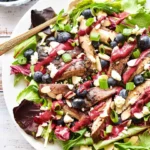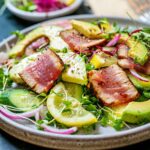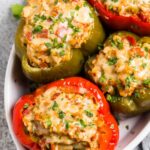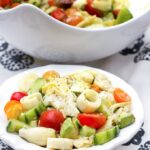Exploring traditional Irish recipes offers a delightful way to bring the rich culture and flavors of Ireland into your kitchen. From hearty stews to savory pies, these dishes are filled with wholesome ingredients and time-honored methods that have been passed down through generations. You’ll discover meals that showcase the simplicity and comfort of Irish cooking, perfect for any occasion.
Whether you’re celebrating St. Patrick’s Day or simply want to try something new, these recipes provide an authentic taste of the Emerald Isle. Each dish tells a story, reflecting the landscape and history of Ireland in every bite. Your culinary journey through these traditional Irish recipes promises to be both delicious and enriching.
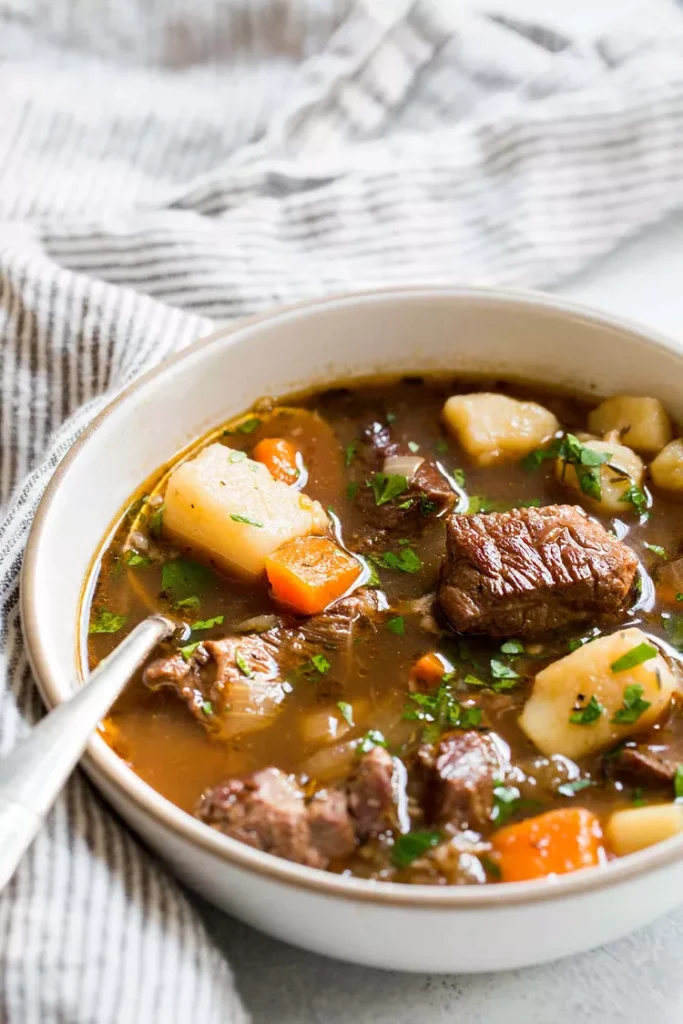
1) Irish Stew
Irish stew is a hearty and simple dish made with lamb, potatoes, and vegetables. You’ll often find carrots, onions, and sometimes celery in the mix. This dish has deep roots in Irish culture and is enjoyed by many, especially during cold weather.
To start, preheat the oven to a low temperature, around 150°C (about 300°F). Heat some oil in a heavy pot, like a Dutch oven, and brown pieces of lamb on all sides. Don’t overcrowd the pot; brown the lamb in batches. Once browned, set the meat aside.
Next, add chopped vegetables such as potatoes, carrots, and onions to the pot. Pour in enough water or broth to cover everything. Sometimes, people also add herbs like thyme or bay leaves for extra flavor.
Allow the stew to simmer gently for about two hours. Keep it uncovered and skim off any foam that rises to the top. The low and slow cooking process lets all the flavors meld together. Stir occasionally to ensure nothing sticks to the bottom.
Once done, the lamb should be tender, and the broth should be rich and flavorful. Serve hot and enjoy this traditional Irish comfort food!
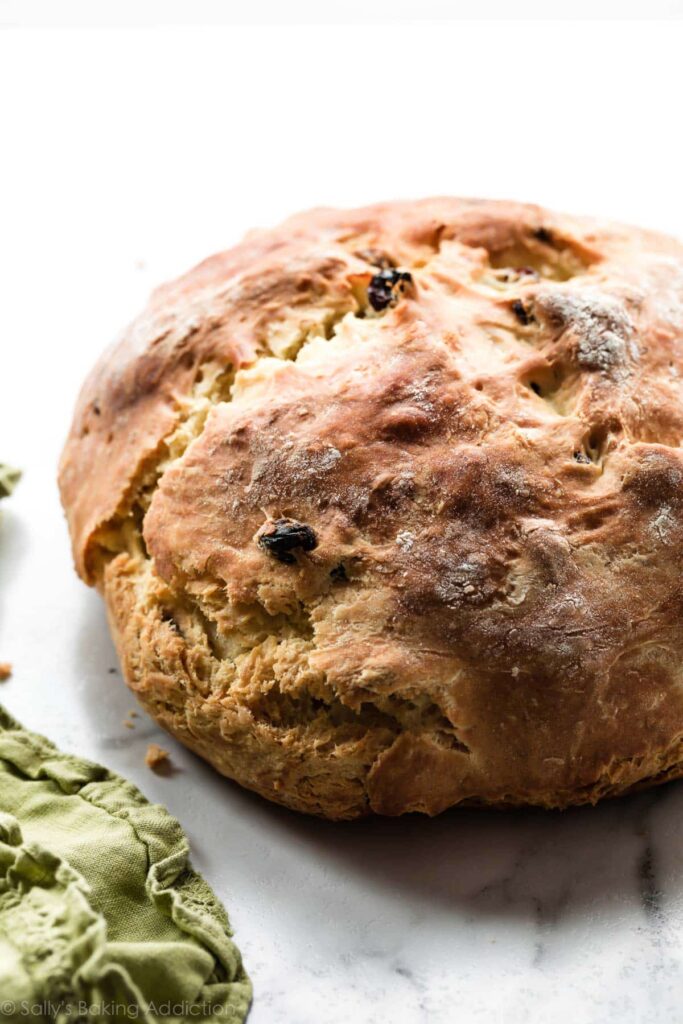
2) Soda Bread
Soda bread is a classic Irish recipe known for its simplicity and delicious taste. Traditionally made with only a few ingredients, it’s an easy bread to bake at home. You can find most of the ingredients in your pantry: flour, baking soda, salt, and buttermilk.
To start, preheat your oven. Combine the dry ingredients in a bowl: flour, baking soda, and salt. Make sure to mix them well. In a separate bowl, mix buttermilk. If you don’t have buttermilk, you can use regular milk with a bit of vinegar or lemon juice as a substitute.
Next, create a well in the center of the dry ingredients and pour in the buttermilk. Using your hands or a spoon, combine the mixture until it forms a dough. Be careful not to overmix, as you want to keep the bread light and fluffy.
Transfer the dough onto a floured surface and shape it into a round loaf. Place it on a baking sheet. To ensure even baking, cut a deep cross on the top of the loaf. This traditional step also has the folklore of “letting the fairies out.”
Bake the bread until it’s golden brown and sounds hollow when tapped on the bottom. Enjoy your fresh soda bread with butter, jam, or alongside a hearty stew.
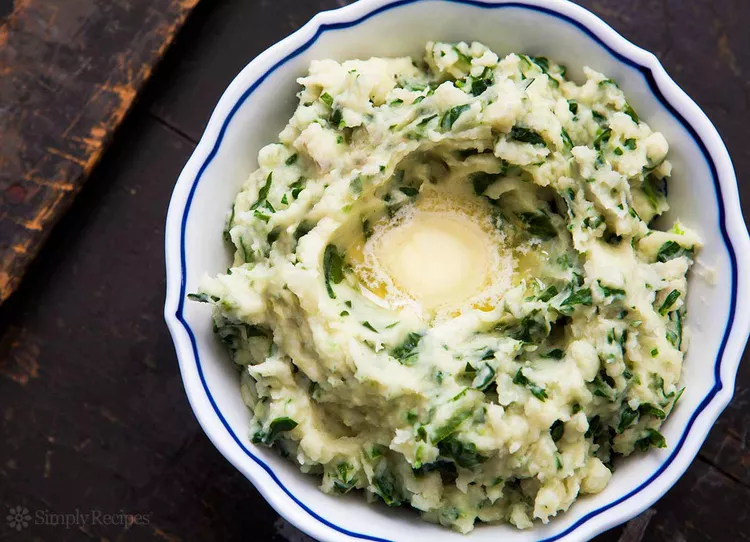
3) Colcannon
Colcannon is a traditional Irish dish made from potatoes and greens like cabbage or kale. It’s perfect as a side dish for various meals, especially during celebrations like St. Patrick’s Day.
To prepare colcannon, start by peeling and boiling potatoes until they’re tender. Meanwhile, slice the cabbage or tear the kale, and cook them in a skillet with butter until they soften.
Combine the cooked potatoes with the sautéed greens in a large bowl. Mash them together, adding butter and half-and-half gradually until you reach a creamy consistency. Season with salt and pepper to taste, and stir well.
Once mixed, transfer your colcannon to a serving dish. For an extra touch, you can top it with more butter. Enjoy it hot as a comforting and hearty side dish.
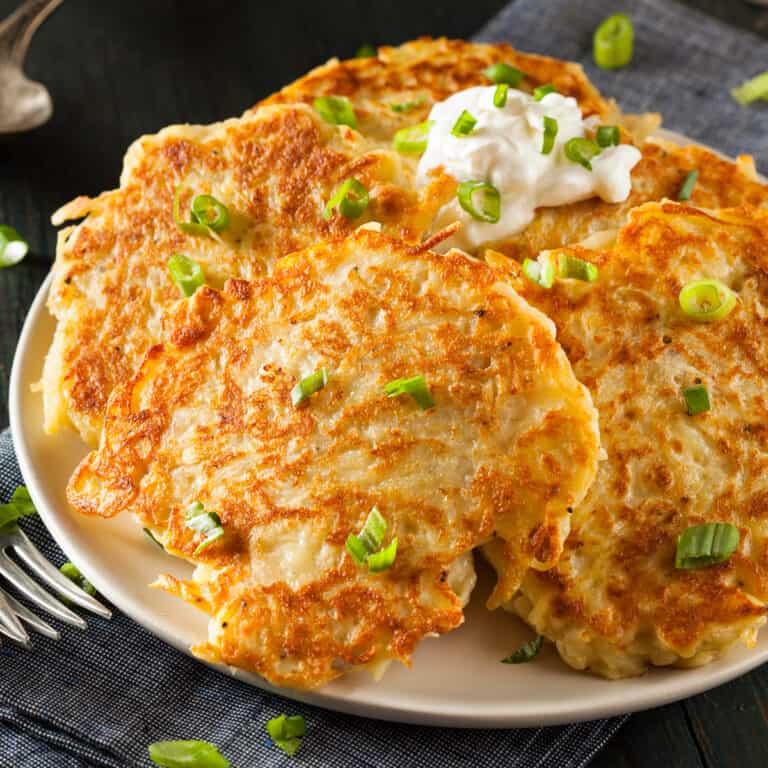
4) Boxty
Boxty is a traditional Irish potato pancake. It’s a unique mix of mashed and grated potatoes, giving it a distinct texture. You can make it easily with ingredients you might already have at home.
Start by preparing your mashed potatoes. Peel, boil, and mash one medium potato. Use butter and a little milk for a creamy texture.
Next, grate a second raw potato. Combine the mashed and grated potatoes in a large bowl. Add flour, baking powder, and salt to the mix.
In a separate bowl, whisk together eggs and milk. Pour this into the potato mixture and stir well. This creates the batter for your boxty.
Heat oil in a skillet over medium-high heat. Drop spoonfuls of the mixture into the hot oil, forming small patties. Cook each side for 3 to 4 minutes until golden brown.
Serve your boxty hot. It can be eaten on its own or with a variety of toppings, like sour cream or chives. Some people even enjoy it with a hearty Irish stew.
Boxty is a versatile dish. Enjoying it will give you a taste of Irish culinary tradition. Whether for breakfast, lunch, or dinner, it’s a delicious way to incorporate potatoes into your meal.
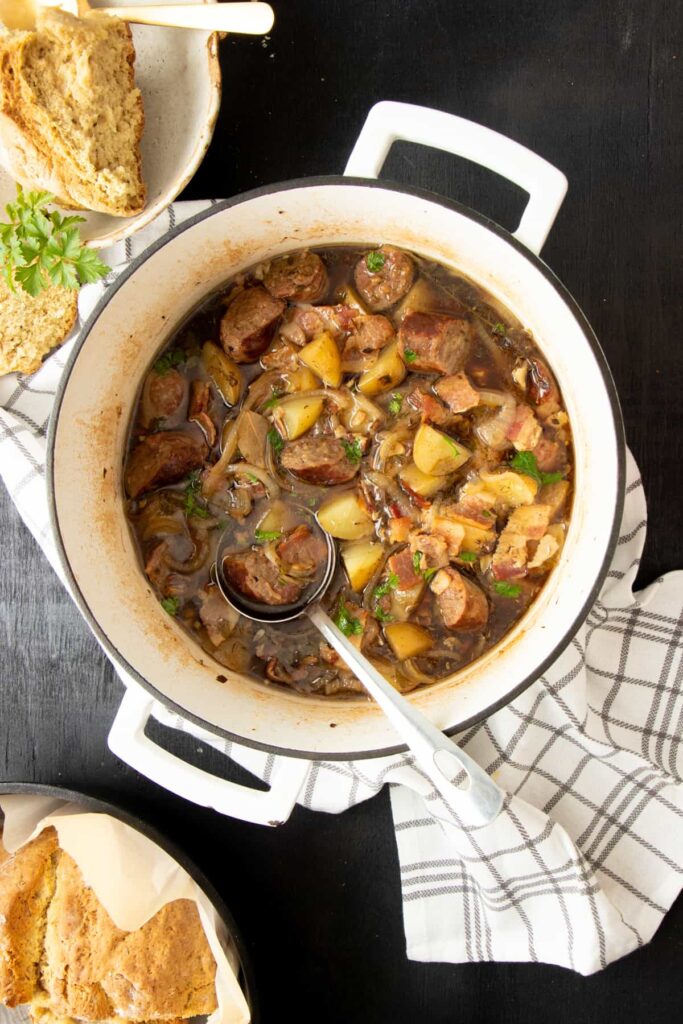
5) Coddle
Coddle is a traditional Irish comfort food, especially popular in Dublin. The dish primarily consists of sausages, bacon, potatoes, and onions. These ingredients are slow-cooked together in a pot until tender. It’s a hearty meal, often enjoyed during cold weather.
You typically start by frying the bacon to render the fat. Then, add the sausages to brown them slightly. After that, layer sliced potatoes and onions in the pot. Pour broth or water over the ingredients to cover them.
Place the pot in a preheated oven at 300 degrees Fahrenheit. Let it cook for about two and a half hours. This slow cooking allows the flavors to blend beautifully. The potatoes should be tender, and the sausages fully cooked.
Some recipes add parsley or other herbs for extra flavor. You can also brown the top layer of potatoes under the broiler for a few minutes before serving. This gives them a nice golden color and a bit of crispiness.
Coddle is best served hot, straight from the pot. It’s perfect for feeding a crowd or enjoying with family. This dish highlights the simple yet satisfying flavors of Irish cuisine.
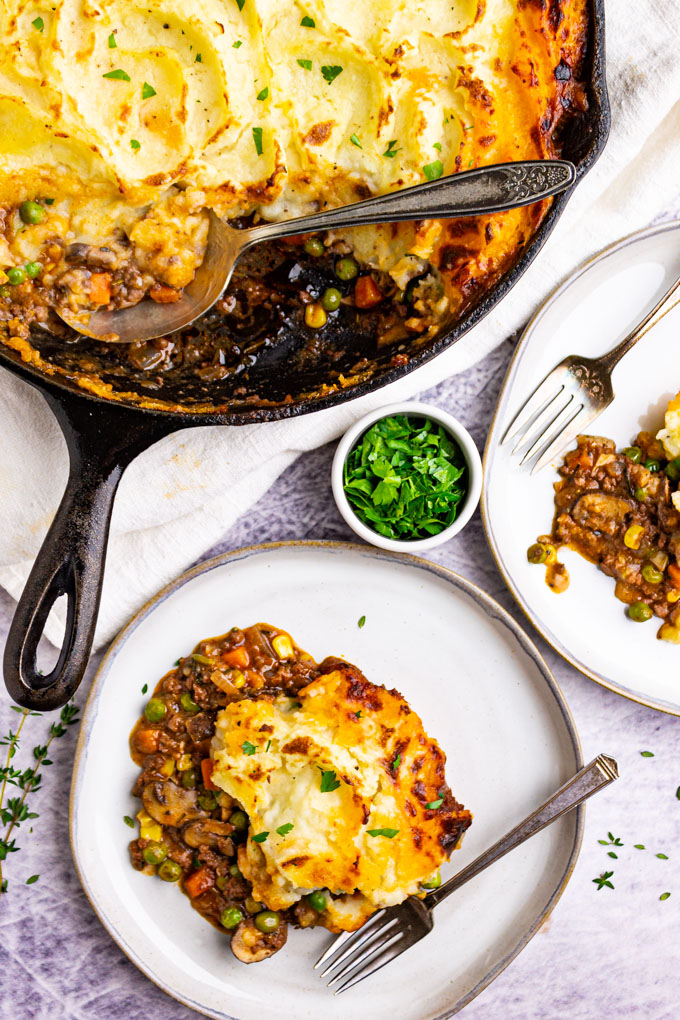
6) Shepherd’s Pie
Shepherd’s Pie is a classic Irish dish that combines meat, vegetables, and mashed potatoes. Traditionally, it uses ground lamb, but you can also make it with ground beef.
To start, cook the onions in a skillet with oil until they are soft. Add ground lamb and break it apart with a wooden spoon. Season with salt, pepper, parsley, rosemary, and thyme.
Next, add chopped carrots and garlic. Cook for a few more minutes until the carrots begin to soften. Then, pour in some red wine or stout beer to deglaze the pan. This helps lift all the flavorful bits stuck to the bottom.
Once the meat mixture is ready, transfer it to a baking dish. Top it with a thick layer of mashed potatoes. For creamy mashed potatoes, mix boiled potatoes with butter, milk, salt, pepper, and a beaten egg yolk.
Finally, spread the mashed potatoes evenly over the meat mixture. Bake in a preheated oven until the top turns golden brown and the filling starts bubbling around the edges. This usually takes about 25 to 30 minutes. Enjoy your Shepherd’s Pie hot from the oven!
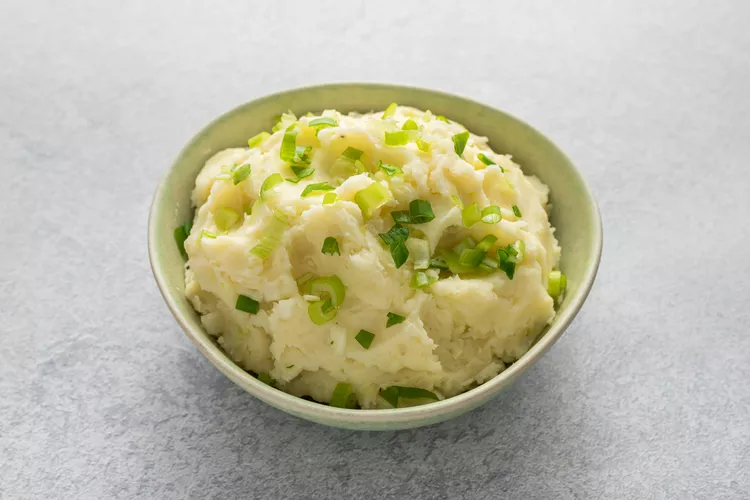
7) Champ
Champ is a traditional Irish dish made with mashed potatoes and green onions (scallions). It’s simple, comforting, and typically served as a side dish for meat or fish.
Start by scrubbing the potatoes and placing them in a pot of cold water. Bring to a boil and simmer until the potatoes are fork-tender, usually around 20-30 minutes.
While the potatoes are cooking, chop the white and green parts of the green onions into small pieces. Heat milk in a small pot with the chopped green onions until the milk is infused with the onion flavor.
Once the potatoes are tender, drain and return them to the pot. Use low heat to dry them slightly. Add the infused milk, butter, and some salt. Mash until smooth.
Champ can be personalized with additional mix-ins like roasted garlic or crumbled bacon. Some even enjoy a fried egg on top, mixing the yolk with the potatoes.
Serve your champ hot with a pat of butter on top. It’s an easy and delicious way to enjoy a taste of Ireland.
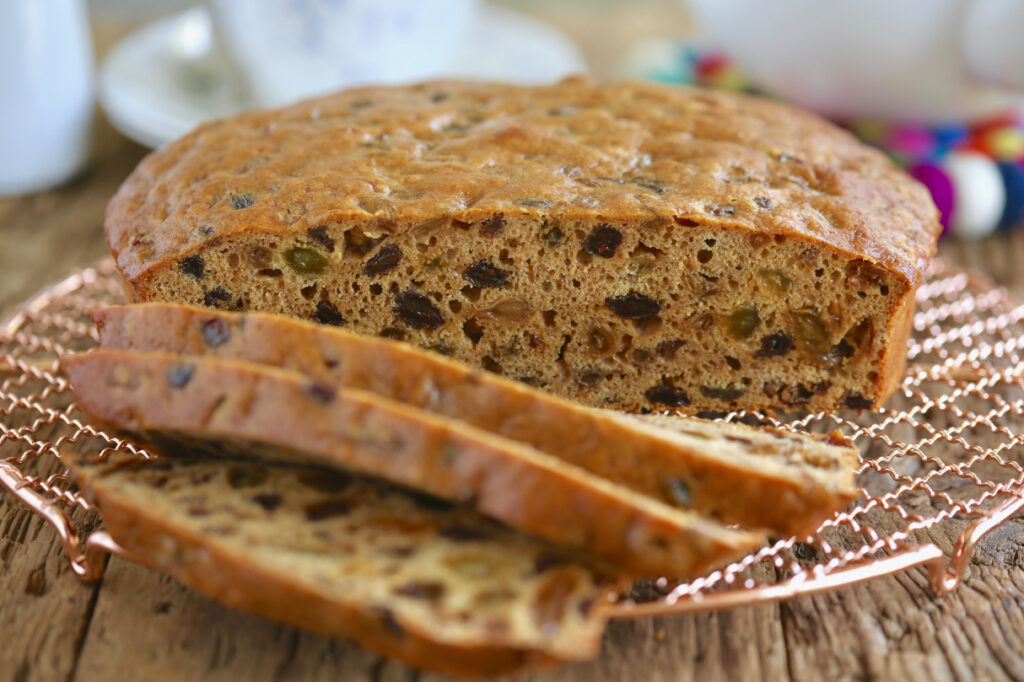
8) Barmbrack
Barmbrack is a traditional Irish bread, often enjoyed during Halloween. It is a sweet bread filled with dried fruits that have been soaked in tea, adding to its unique flavor.
To make Barmbrack, begin by soaking the dried fruit in hot tea. This can be done overnight for the best results. The soaked fruit gives the bread a rich and moist texture.
Next, prepare the dough. You’ll need flour, sugar, spices like cinnamon and nutmeg, and baking soda. Mix these dry ingredients together.
In a separate bowl, lightly beat an egg, and then mix it with sugar, marmalade, and the soaked fruit. Combine the wet and dry ingredients to form a dough.
Preheat your oven to around 350 degrees F (175 degrees C). Grease a loaf tin or Bundt pan. Pour the dough into the prepared pan.
Bake the bread for about 50-60 minutes. To check if it’s done, insert a skewer into the center of the loaf. If it comes out clean, the Barmbrack is ready.
Once baked, let it cool in the pan before transferring to a wire rack. This bread is best served sliced and buttered, making for a delicious treat.
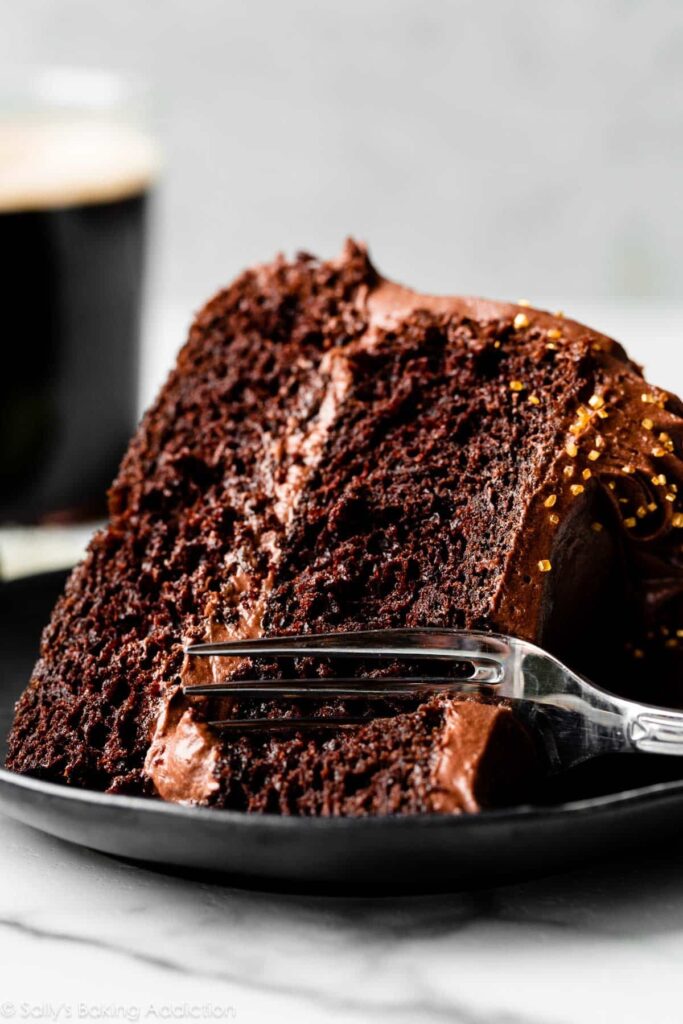
9) Guinness Cake
Guinness cake is a classic Irish dessert that combines the deep flavor of stout beer with rich chocolate. This cake is a favorite for its unique taste and moist texture.
To begin, preheat your oven to 350°F. Grease and line your cake pans with parchment paper. This helps the cake release easily after baking.
In a saucepan, melt butter over medium-low heat. Add Guinness to the melted butter and bring it to a simmer. Remove from heat and stir in cocoa powder. Let this mixture cool for about 10 minutes.
In a large mixing bowl, whisk together flour, sugar, baking soda, baking powder, and salt. In another bowl, beat eggs and combine with sour cream. Add the stout-cocoa mixture to the egg mixture, stirring well.
Pour the wet ingredients into the dry ingredients and mix until smooth. Pour the batter into your prepared pans. Bake for 40-45 minutes, or until a toothpick comes out clean from the center.
For a finishing touch, consider frosting your cake with an Irish cream frosting. The combination of the rich cake and sweet frosting makes for an irresistible treat.
This dessert is perfect for special occasions or for when you want to share a taste of Ireland. Enjoy every bite of your delicious Guinness cake!
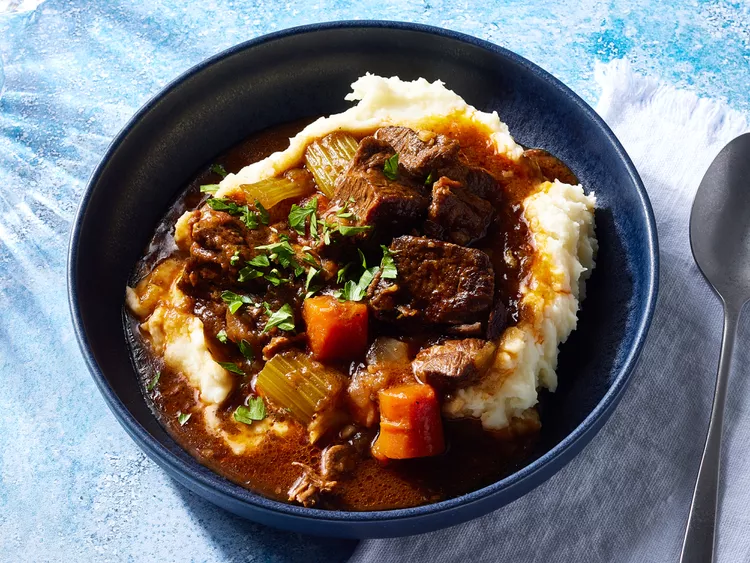
10) Beef and Guinness Stew
Beef and Guinness Stew is a classic Irish dish known for its rich flavors. You start by browning the beef to create a deep flavor base. Bacon adds a smoky taste.
Next, cook garlic and onions until soft. This helps build the stew’s flavor. Then, add carrots and celery for some sweetness and crunch.
Stir in flour to thicken the stew. Add Guinness beer, which gives the stew its unique taste. Use a wooden spoon to scrape up the browned bits from the bottom of the pot.
Pour in beef stock and tomato paste. Mix everything well and add some bay leaves and thyme.
Lower the heat and cover the pot. Let it simmer for about two hours. This makes the beef tender and the flavors blend together.
This stew is best served hot, often with a side of mashed potatoes or crusty bread. It’s a comforting meal for cold days, full of hearty ingredients and deep flavors. Enjoy your hearty Irish Beef and Guinness Stew!
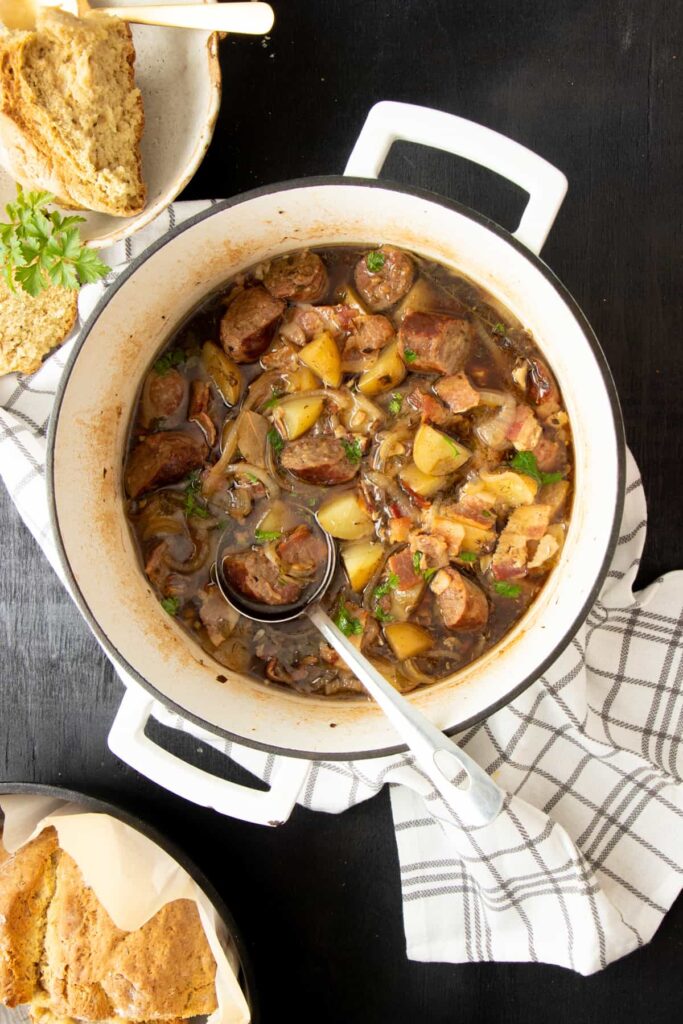
11) Dublin Coddle
Dublin Coddle is a traditional Irish stew known for its hearty and comforting ingredients. This dish combines sausages, bacon, potatoes, and onions, all cooked together in a flavorful broth.
To start, you need good-quality sausages and bacon. Brown them in a pot to enhance their flavors. Once browned, set the sausages and bacon aside.
Next, add onions to the pot and cook until they are translucent. Layer the cooked onions, and then add the sausages and bacon back to the pot. Slice the potatoes and layer them on top of the meat.
Pour in enough broth to cover the ingredients. You can use chicken, beef, or vegetable broth. Season with salt, pepper, and parsley.
Cover the pot with a lid and simmer on low heat. Cooking time can range from 1 to 2 hours, allowing the flavors to meld together.
Dublin Coddle can also be prepared in the oven. Preheat your oven to 300°F. After browning the meat and cooking the onions on the stove, layer all ingredients in an oven-proof pot. Cover and bake for about 2 ½ hours.
This dish is perfect for chilly days and can be served with crusty bread.
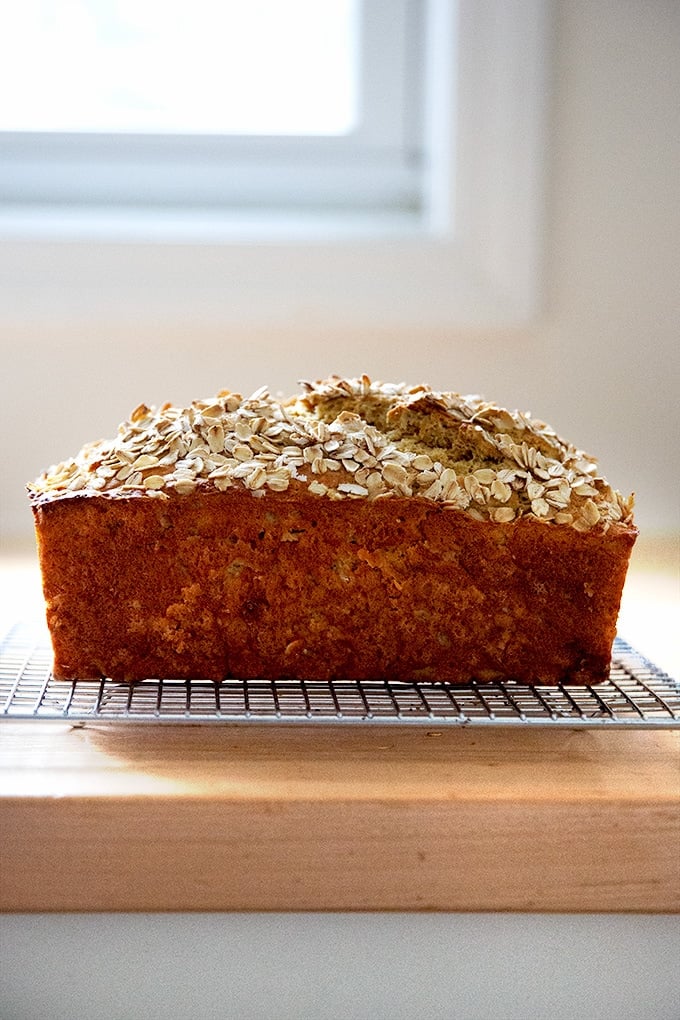
12) Irish Brown Bread
Irish Brown Bread is a staple in Irish cuisine. It’s known for its hearty texture and rich flavor.
To start, you’ll need whole wheat flour, white flour, salt, baking soda, and butter. Mixing these dry ingredients thoroughly is key before adding the wet ingredients.
Create a well in the center of your mixed dry ingredients. Pour in buttermilk, honey, and sometimes a bit of melted butter or oil. Mix just until combined; over-mixing can make the bread tough.
Once mixed, shape the dough into a round loaf. Place it on a lightly greased or parchment-lined baking sheet. For a traditional touch, you can use a cast iron skillet.
Preheat your oven to 450°F (about 232°C) to get a good initial rise. After 15 minutes, reduce the temperature to 400°F (about 204°C) and bake for an additional 20-25 minutes.
You’ll know it’s done if it sounds hollow when you tap the bottom. This method ensures a nicely baked, crusty loaf.
Serve fresh with butter and jam or along with hearty stews. Irish Brown Bread is a versatile addition to any meal.
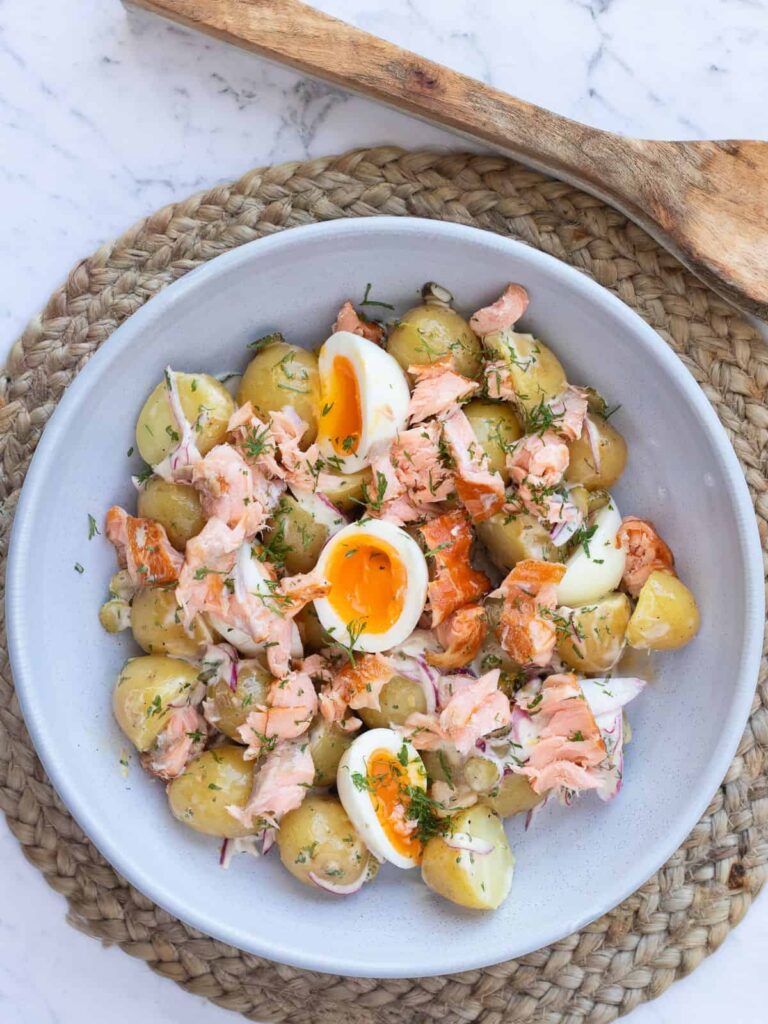
13) Smoked Salmon and Potato Salad
Smoked salmon and potato salad is a simple yet delicious dish. It’s perfect for a light lunch or as an appetizer.
To start, you’ll need new potatoes. Boil them until tender, then cut them into bite-sized pieces.
For the salad, add sugar snap peas and spring onions to the bowl with the potatoes.
Break the salmon fillet into large flakes and mix it in.
Prepare a dressing with lemon juice, olive oil, and a touch of dill. Drizzle it over the salad and toss gently.
Serve this colorful and fresh salad on plates. Add a few capers for extra flavor.
The combination of smoked salmon and potatoes creates a delightful taste of Ireland. Enjoy!
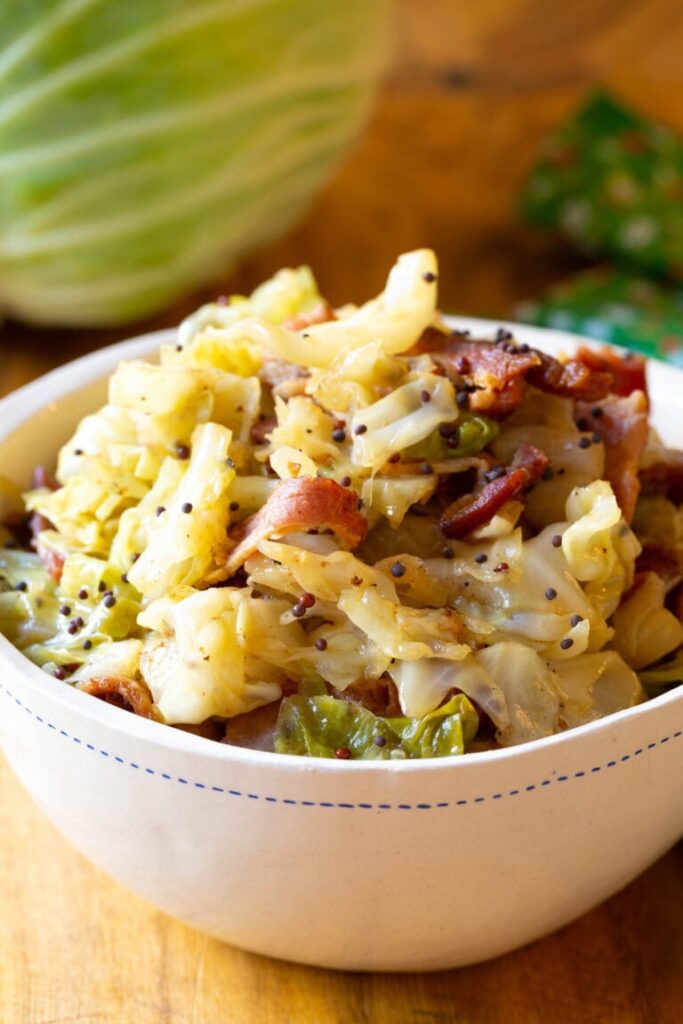
14) Bacon and Cabbage
Bacon and cabbage is a classic Irish dish loved by many. Start by placing a large stockpot over medium heat. Cut the bacon into pieces and cook until it’s done but not too crispy.
Meanwhile, prepare the cabbage. Remove the outer leaves and core, then chop it into bite-sized pieces. Add the cabbage to a saucepan and cover it with some reserved cooking liquid. Bring to a boil, then simmer for a few minutes until tender.
You can add some potatoes to the mix for a heartier meal. Peel and quarter the potatoes, then add them to the pot with the bacon. Cook until everything is tender and delicious. Don’t forget to season with some salt and pepper.
This meal is often served with a parsley sauce. To make the sauce, whisk together some roux and milk until smooth. Add chopped parsley and let it simmer on low heat for a few minutes. Drizzle the sauce over your bacon and cabbage for extra flavor.
Serve the bacon and cabbage hot. This dish is perfect for a cozy dinner and offers a taste of traditional Irish comfort food.
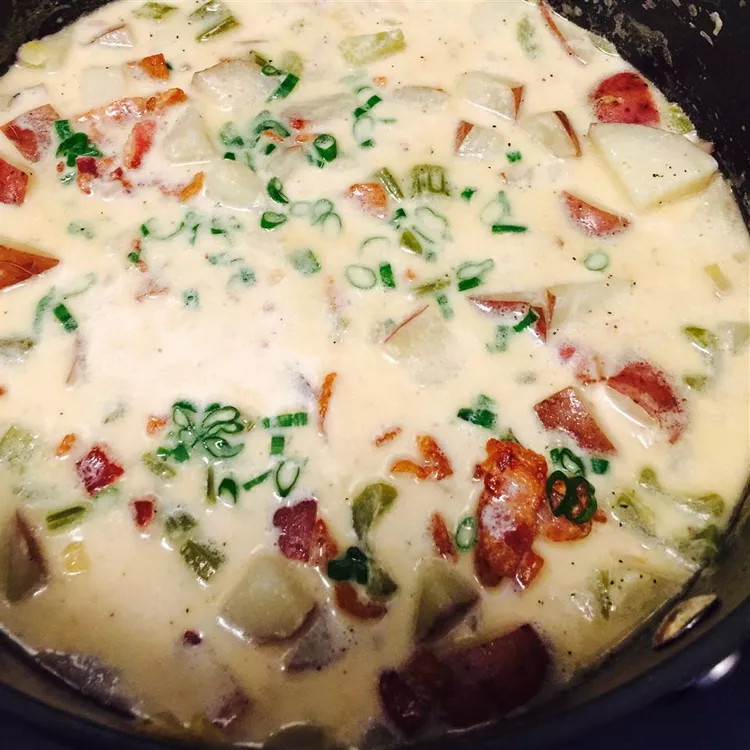
15) Irish Potato Soup
Irish Potato Soup is a delicious and hearty dish that’s perfect for cold days.
To start, heat some butter in a large pot. Add chopped onions and celery, then sauté until tender.
Next, add peeled and diced potatoes along with garlic powder, salt, and pepper. Pour in chicken stock and bring the mixture to a boil.
Once boiling, reduce the heat and let it simmer until the potatoes are soft. This usually takes about 20 minutes.
After the potatoes are tender, turn off the heat. Use a hand blender to purée the soup until smooth.
You can also add milk or cream for extra richness. Stir in some grated cheese if you like, letting it melt into the soup.
This traditional Irish dish is easy to make and incredibly satisfying. Enjoy it with some crusty bread for a complete meal.
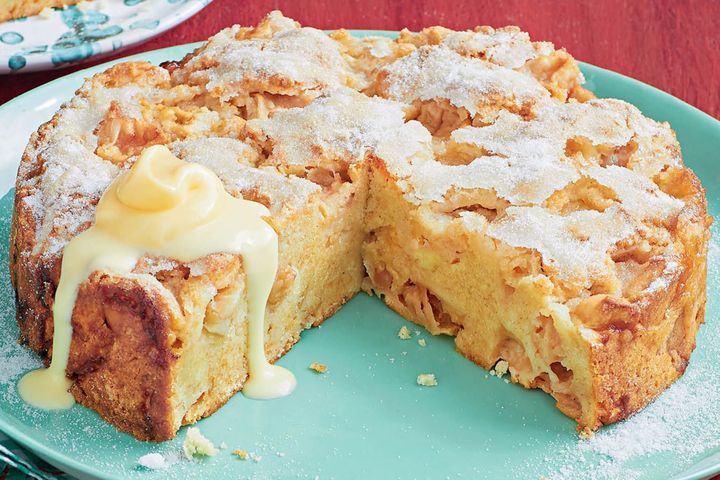
16) Irish Apple Cake
Irish Apple Cake is a traditional dessert that’s perfect for any occasion. It has a moist and tender crumb with a sweet apple filling. You’ll start by preheating your oven to 350°F and greasing a 9-inch springform pan.
Now, mix together flour, baking powder, cinnamon, and a pinch of salt. In another bowl, cream butter and sugar until light and fluffy. Add eggs one at a time, beating well after each addition.
Next, you’ll fold the dry ingredients into the butter mixture, alternating with milk. Spoon the batter into the pan and smooth it out evenly. Arrange thin apple slices on top.
For extra texture, make a streusel topping with flour, butter, and sugar. Sprinkle this evenly over the apples and press down gently. Bake the cake for about 65-75 minutes until the top is golden brown and crispy.
Let the cake cool for a bit before serving. To elevate the flavor, serve it with a homemade or store-bought custard sauce. Irish Apple Cake is best enjoyed fresh from the oven, but you can reheat it to refresh its texture. This treat embodies the cozy and comforting spirit of traditional Irish baking.
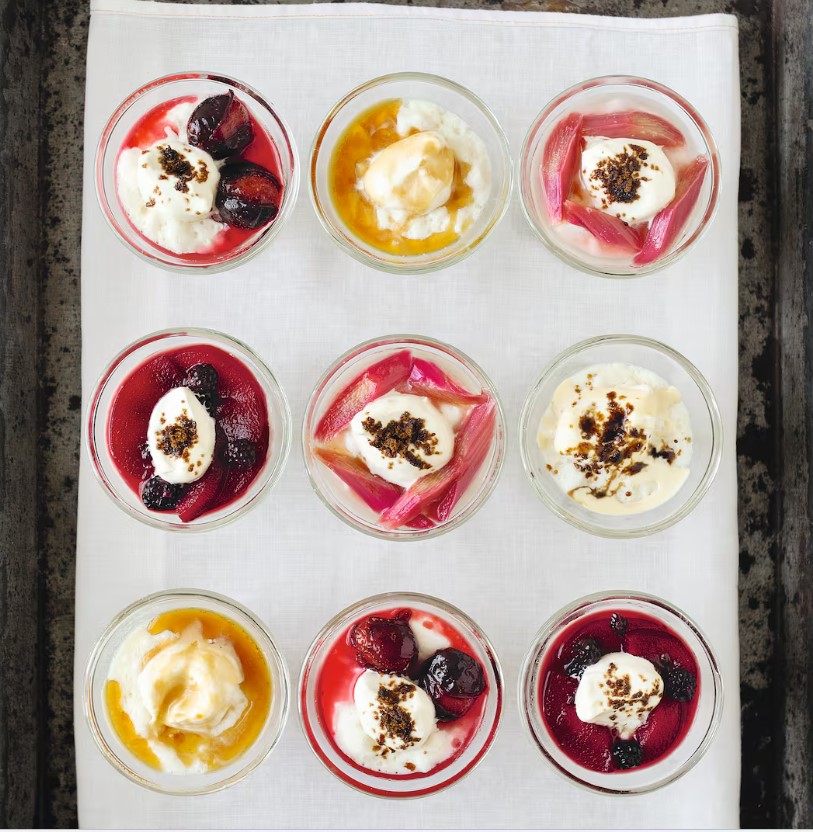
17) Carrageen Moss
Carrageen Moss, also known as Irish moss, is a type of seaweed used in traditional Irish cooking. It’s known for its thickening properties, making it a common ingredient in desserts.
To make Carrageen Moss pudding, you first need to soak the dried moss in water for a few minutes. Then, you boil it with milk until it thickens.
Once it has thickened, strain the mixture and let it cool. The pudding can be served plain or with toppings like whipped cream or a thick Irish coffee sauce.
Some recipes suggest adding egg yolks and sugar to the mixture to make the pudding richer. This gives the pudding a smooth and creamy texture.
Carrageen Moss is not only used in puddings. It’s also used in blancmanges and other creamy desserts. Its natural gelling properties make it a versatile ingredient in many dishes.
You can find Carrageen Moss at health food stores or online. It’s a unique way to explore traditional Irish flavors in your cooking.
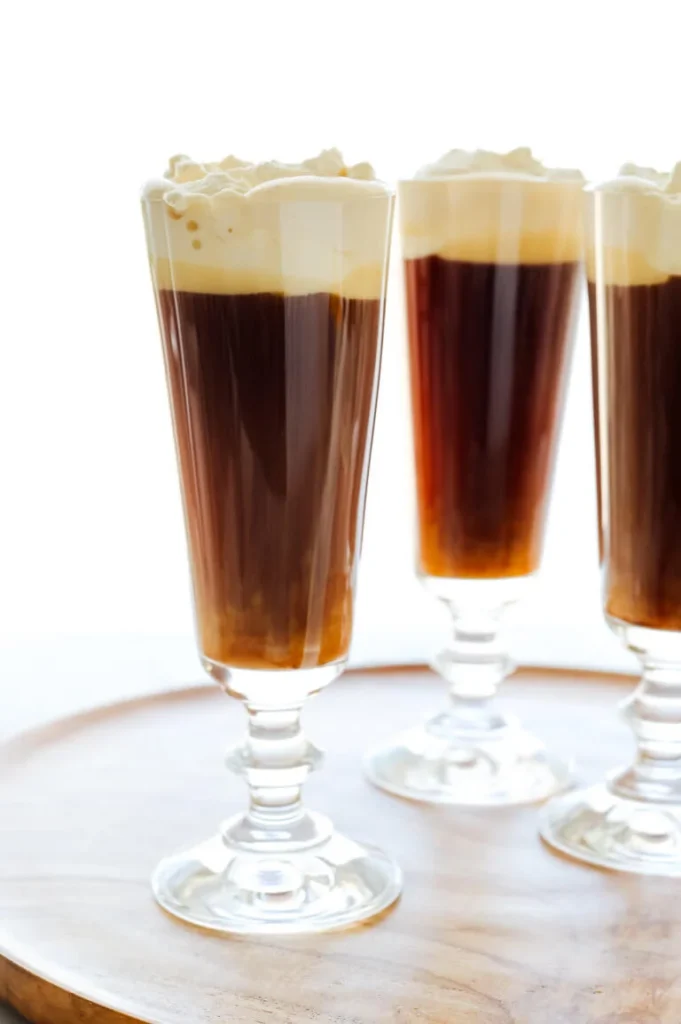
18) Irish Coffee
Irish Coffee is a classic drink that brings together coffee and whiskey in a delightful way. To make it, start by warming a heatproof glass with hot water. Discard the water and add 1 to 2 teaspoons of brown sugar.
Add a jigger (1.5 ounces) of Irish whiskey to the warmed glass. Pour in hot, strong coffee until the glass is about three-quarters full. Stir until the sugar is fully dissolved.
Float lightly whipped heavy cream on top by slowly pouring it over the back of a spoon. This layering keeps the cream afloat. Do not stir; the cream should stay on top while you drink through it. Enjoy your Irish Coffee warm.
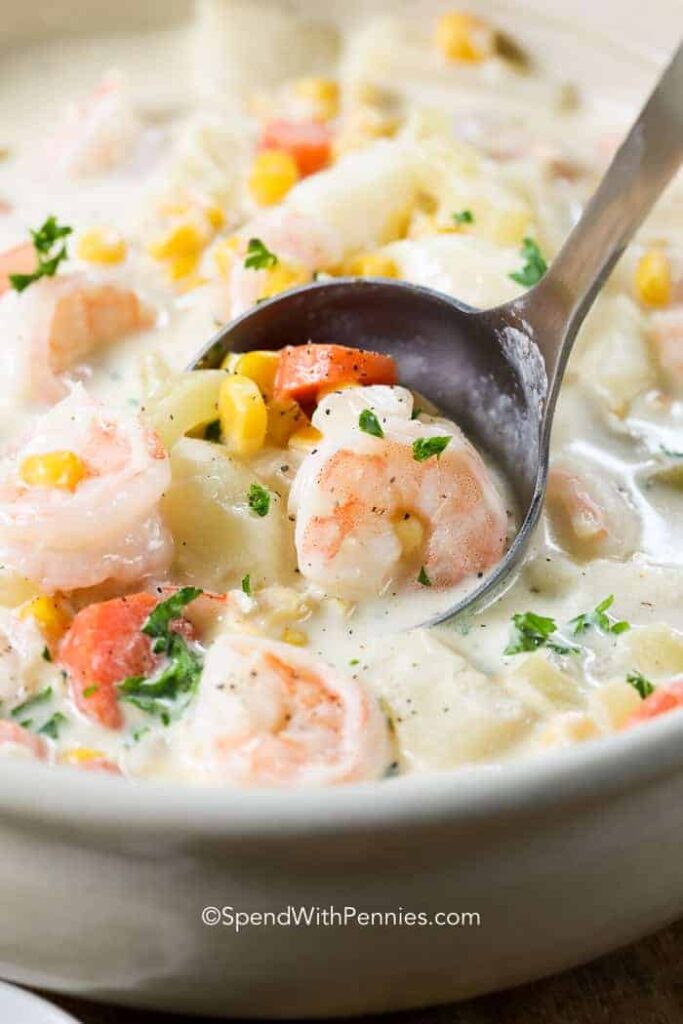
19) Seafood Chowder
Seafood chowder is a beloved traditional Irish dish. This creamy soup combines fresh seafood with hearty vegetables, creating a comforting meal.
Start by melting butter in a large pot. Sauté onions, celery, and carrots until they’re soft. Add garlic and cook until fragrant. Next, pour in some fish stock and bring it to a boil.
Add potatoes and bay leaves to the boiling stock, cooking until the potatoes are tender. For additional creaminess, blend some hot soup with milk and flour, then return this mix to the pot.
Stir in the fresh seafood: fish, prawns, and crab meat. Let the soup simmer until the seafood is heated through. You may want to season with a bit of salt and pepper.
Finish by adding a splash of cream to the pot. Stir well to combine all the flavors. Allow the chowder to heat until it achieves a rich, creamy texture.
Seafood chowder pairs well with warm, crusty bread. Enjoy this delicious, hearty soup that brings the taste of the Irish sea to your table.
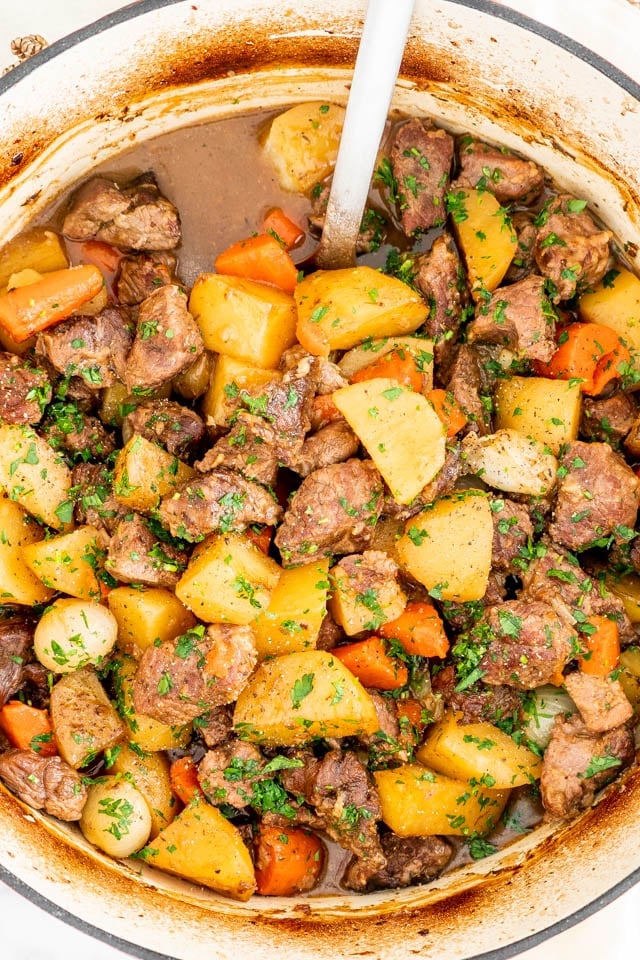
20) Irish Lamb Stew
Irish Lamb Stew is a hearty and comforting dish perfect for cold days. Start by preheating your oven to 150°C (300°F). Heat some oil in a large pot and brown the lamb pieces on all sides. Cook the lamb in batches to avoid overcrowding.
Once the lamb is browned, set it aside. Add chopped carrots, potatoes, and onions to the pot. Stir and cook briefly. Pour in beef broth and add bay leaves, thyme, salt, and pepper.
Place the browned lamb back into the pot. Bring the mixture to a boil, then cover and place it in the oven. Let it cook for 2.5 to 3 hours until the lamb is tender.
In the final 20 minutes of cooking, add some peas to the stew. This will bring a pop of color and fresh flavor. Once cooked, garnish with chopped parsley. Serve hot with crusty bread. Enjoy the rich, deep flavors of this classic Irish dish.
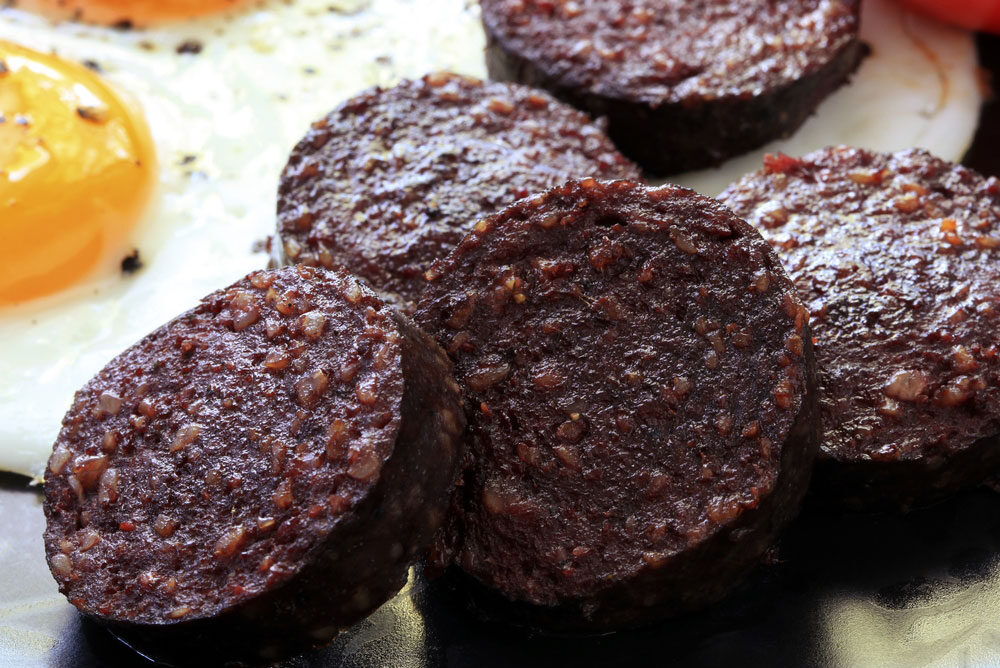
21) Black Pudding
Black pudding is a classic Irish dish that you can enjoy at breakfast. It’s made from pork blood, fat, and oats or barley.
Start by boiling the pig’s liver in lightly salted water until tender. Save the liquid for later use. After cooling, mince the liver.
Next, mix the pig’s blood with finely diced fat, cooked barley or oats, and minced onion. Season with salt, pepper, and allspice.
Combine the nuts, minced liver, and the liquid from boiling. Stir everything together until well mixed.
If using casings, fill them with the mixture. If not, shape it into a loaf.
Bake at 350°F (175°C) until the internal temperature reaches 160°F (71°C). This usually takes 1-2 hours.
Allow the black pudding to cool before slicing. Serve it with traditional Irish breakfast items like eggs, bacon, and soda bread.
This dish offers a taste of Ireland’s history and culinary traditions.
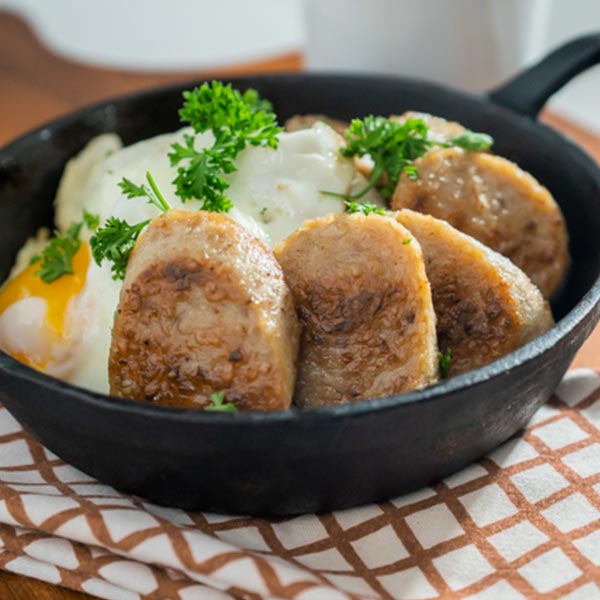
22) White Pudding
White pudding is a traditional Irish sausage that is a staple in many Irish breakfasts. Unlike black pudding, it does not contain blood, making it a milder but no less delicious option.
To prepare white pudding, you will need minced pork meat, pork fat, oats or breadcrumbs, and a mix of spices such as salt, black pepper, ginger, nutmeg, and mace. Onion is often included for added flavor.
First, combine all the ingredients in a large bowl. Gradually stir in milk until the mixture is smooth and well combined. This mixture is then stuffed into sausage casings. Make sure they are tightly packed to avoid air pockets.
After stuffing, the sausages need to be poached. Place them in a pot of simmering water, usually at about 75°C to 80°C, and cook them for a minute per millimeter of the sausage’s width. Poaching ensures that the sausage sets properly and retains its moisture.
Once poached, you can slice and fry the sausage until it has a crispy exterior. This gives it a delightful texture that contrasts with its soft interior. Enjoy white pudding as part of a hearty breakfast or on its own.
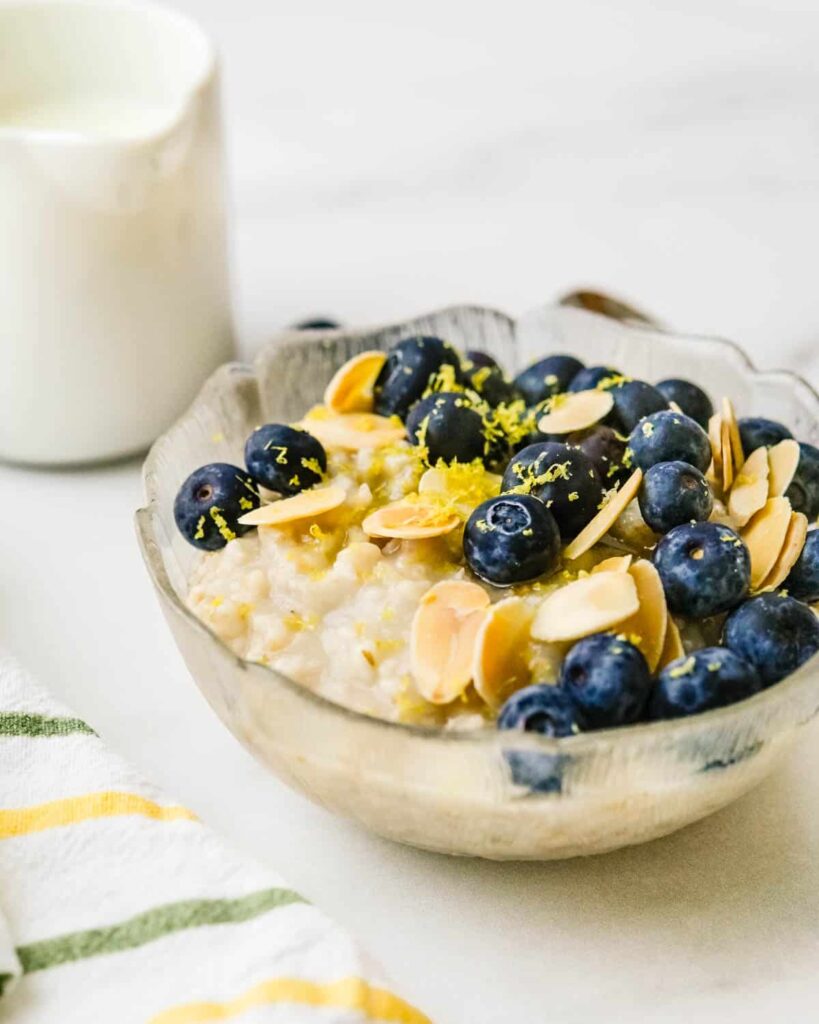
23) Irish Oatmeal
Irish oatmeal is made from steel-cut oats, which gives it a chewy texture. This oatmeal is a simple dish, providing a hearty start to your day.
To prepare, cook steel-cut oats in water over medium heat, stirring often. You can also cook them in milk for a creamier texture. Keep stirring to prevent sticking.
Many enjoy adding a splash of cream or a pat of butter when serving. A sprinkle of brown sugar or a drizzle of honey adds sweetness. You can also stir in fresh fruits, such as berries or apples, for a nutritious boost.
Some recipes suggest baking the oatmeal. This method involves mixing the oats with water, cream, and salt, then baking until the top is golden and bubbling.
Cooking time may vary, so keep an eye on your oatmeal. Test the texture and don’t hesitate to add more water or milk to reach your desired consistency. Enjoy your warm bowl of Irish oatmeal with your favorite toppings.
The charm of Irish oatmeal lies in its simplicity. It’s not only filling but also versatile, allowing you to customize it to your taste.
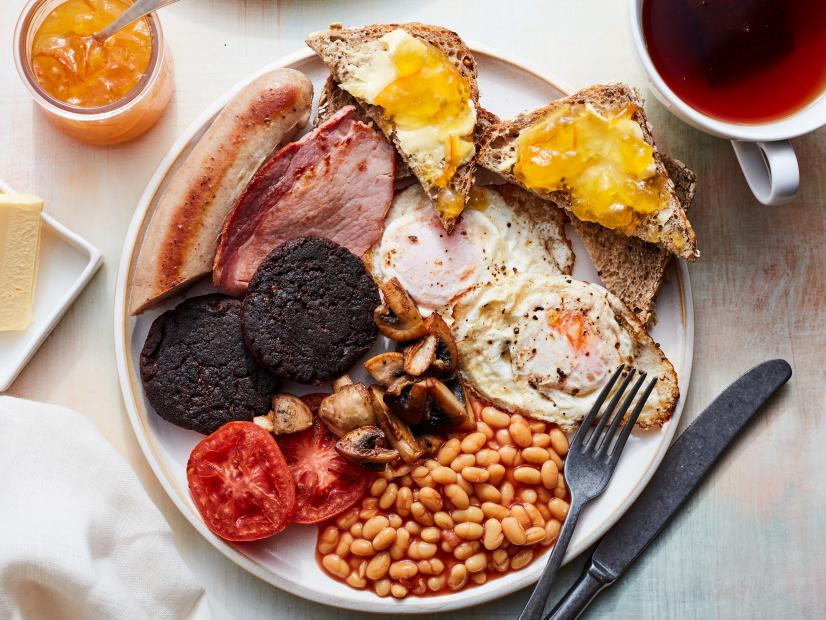
24) Traditional Irish Breakfast
A traditional Irish breakfast is a hearty and filling meal that can set you up for the entire day. It typically includes a mix of familiar and unique ingredients, making it a delightful experience.
You can expect to find bacon, sausages, black and white pudding, and eggs cooked to your liking. Mushrooms and tomatoes are often grilled until they are just right.
Potatoes play a big role in this meal, usually appearing as hash browns or potato pancakes. You might also come across baked beans, adding a bit of sweetness.
Irish soda bread is a staple, served with butter and jam. Washing it down with a cup of tea or an Irish coffee completes the experience.
This breakfast is usually enjoyed on weekends or special occasions, giving you a taste of Irish hospitality.
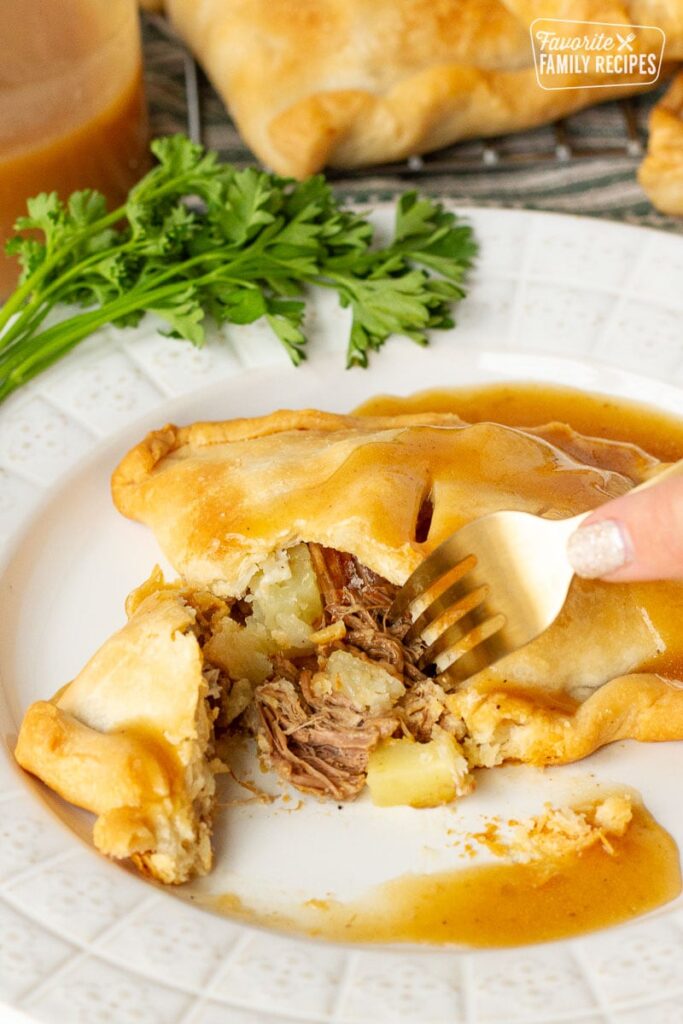
25) Irish Pasties
Irish pasties are a delightful and hearty dish. They typically consist of a savory filling, usually meat and vegetables, encased in a flaky pastry.
To make them, start by preparing the filling. You’ll need diced onions, shredded or chopped meat (like beef or lamb), and cubed potatoes. Season with salt and pepper.
Heat canola oil in a pan on medium heat and cook the onions until golden brown. Set them aside. Cook the meat and mix it with the potatoes and onions in a large bowl.
Preheat your oven to 450 degrees. Unroll your pie crusts and cut them in half. Place a generous amount of the filling on each piece of crust. Fold the crust over and seal the edges tightly.
Place the pasties on a greased cookie sheet and bake until golden brown. Serve warm with a side of chips or a simple salad. These pasties make for a perfect comforting meal.
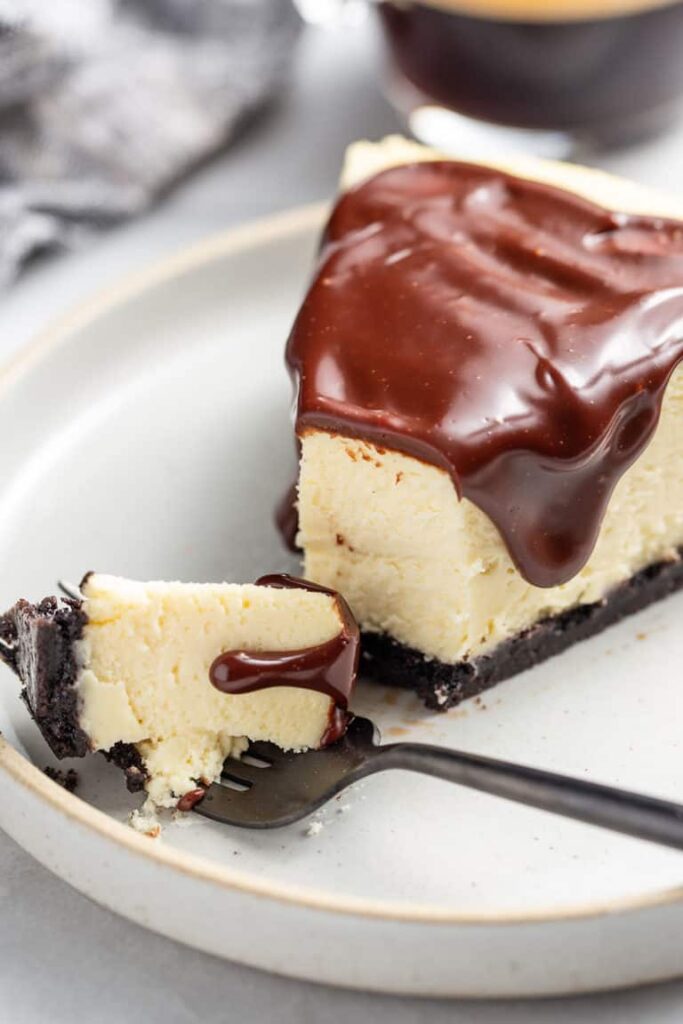
26) Baileys Cheesecake
Baileys Cheesecake is a rich and creamy dessert that incorporates the smooth taste of Baileys Irish Cream. Perfect for any occasion, it combines a crunchy crust with a velvety filling.
Start with the crust. Mix together crushed cookie crumbs and melted butter. Press this mixture into the bottom of a springform pan. Bake for 8 minutes and let it cool.
For the filling, beat cream cheese until smooth. Add sour cream, sugar, and Baileys to the mix. Continue beating until everything is well combined. Add eggs and mix at a low speed until smooth.
Pour the filling over the cooled crust. Bake in a preheated oven. Once done, cool on a rack.
For an extra touch, you can spread a mix of sour cream and sugar on top, then bake for an additional 10 minutes. Let the cheesecake chill in the refrigerator for at least 8 hours or overnight before serving.
If you prefer a no-bake option, melt semi-sweet chocolate and mix with heavy cream to make a ganache. Drizzle over the chilled cheesecake. Enjoy the delightful fusion of Baileys and cheesecake.
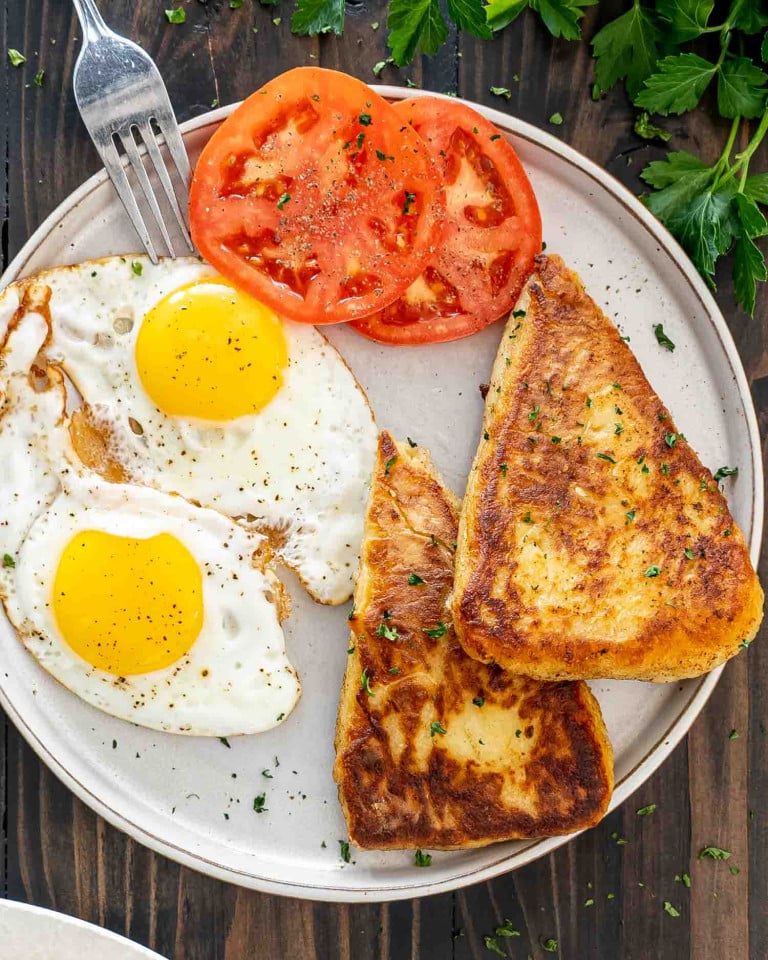
27) Potato Farls
Potato farls are a traditional Irish dish that you’ll love making. They are quite simple to prepare and use just a few basic ingredients. You’ll need potatoes, flour, butter, and some seasoning.
First, boil and mash your potatoes until smooth. Mix in the flour, melted butter, salt, and pepper until a dough forms. The dough will be sticky but don’t worry. That’s normal.
Next, dust a surface with flour and knead the dough lightly. Roll it out into a circle about 1/4 inch thick. Then, cut the circle into quarters. These quarters are your farls.
Heat a skillet over medium heat and add a bit of butter. Place the farls in the pan and cook for about 5 minutes on each side. They should turn golden brown and crispy.
Potato farls are best enjoyed warm. They pair well with butter, jam, or even as a side to a full Irish breakfast. Give them a try and add a bit of Irish charm to your meals.
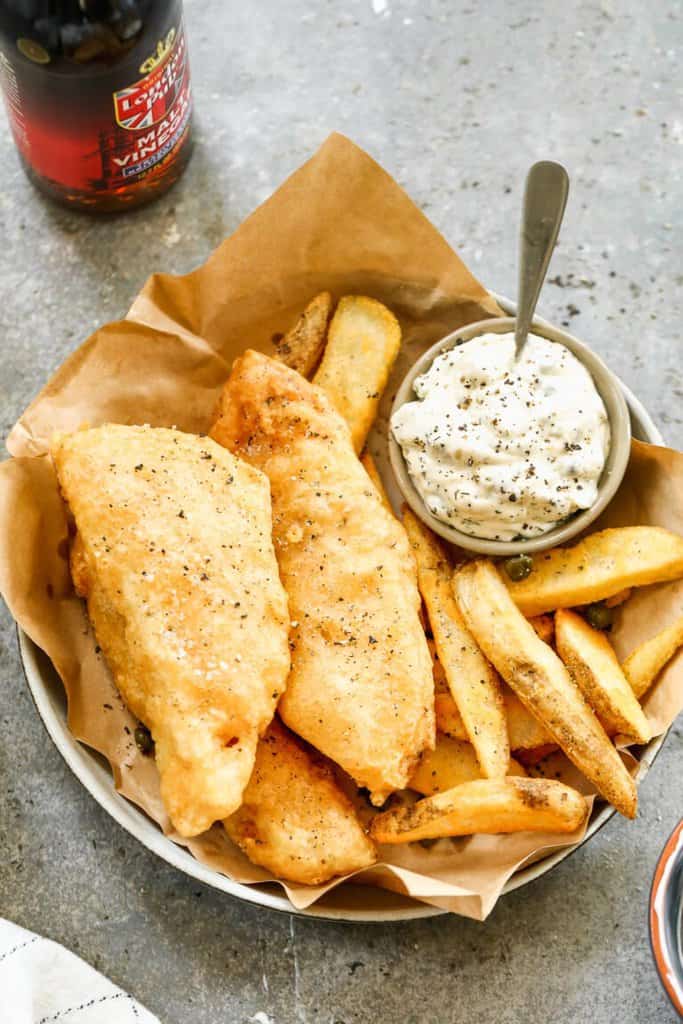
28) Fish and Chips
Fish and chips is a classic favorite in Ireland. It’s simple yet delicious. The crispy battered fish pairs perfectly with hot, salted chips.
Start by making the batter. Mix beer, baking soda, salt, pepper, and an egg in a bowl. Add flour slowly, whisking until the batter is thick and smooth. Make sure it sticks to a spoon.
For the fish, cod is a good choice. Pat the fillets dry with paper towels. Dredge each piece in flour, then dip it into the batter, covering it completely.
Heat oil in a pan or deep fryer to 350°F (175°C). Gently lower the fish into the hot oil. Fry until golden brown and crispy, about 5-7 minutes. Remove and drain on paper towels.
For the chips, cut potatoes into thick slices. Fry them in the same oil after the fish is done. Cook until they’re golden and crispy. Season with salt right after frying.
Serve your fish and chips hot, with a slice of lemon and tartar sauce if you like. This dish is perfect for a family meal or a comforting dinner. It brings a taste of Ireland straight to your table.
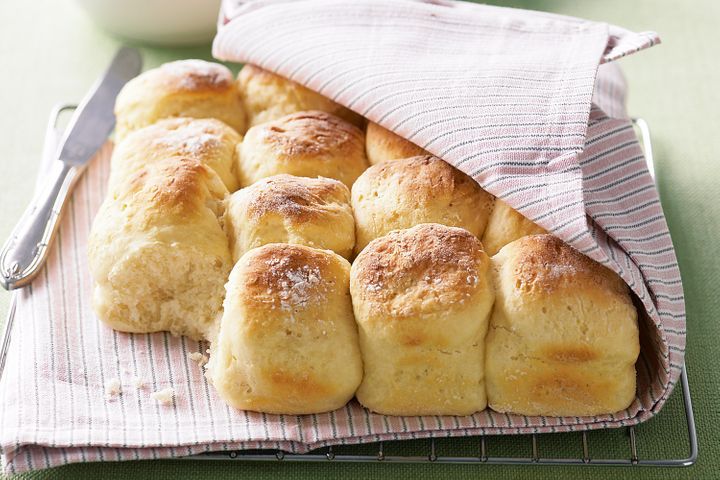
29) Buttermilk Scones
Buttermilk scones are a classic part of Irish baking. They are known for their light, fluffy texture. The key to this texture is the combination of buttermilk and baking powder.
You start by preheating your oven to 425°F. In a large bowl, sieve together flour, baking powder, and salt. Stir in some sugar.
Next, you cut cold butter into the flour mixture. Use your hands to rub the butter in until the mixture looks like coarse breadcrumbs.
In another bowl, mix buttermilk and a beaten egg. Make a well in the center of your dry ingredients. Pour the buttermilk mixture into the well.
Using a wooden spoon, gently mix until just combined. Be careful not to overwork the dough, or your scones will be tough.
Lightly flour a surface and roll out the dough to about 1-inch thick. Use a round cutter to cut out scones. Place them on a greased baking tray.
Brush the tops with a beaten egg for a golden finish. Bake in the preheated oven for about 12-15 minutes until the scones are risen and golden.
Serve warm with butter or jam.
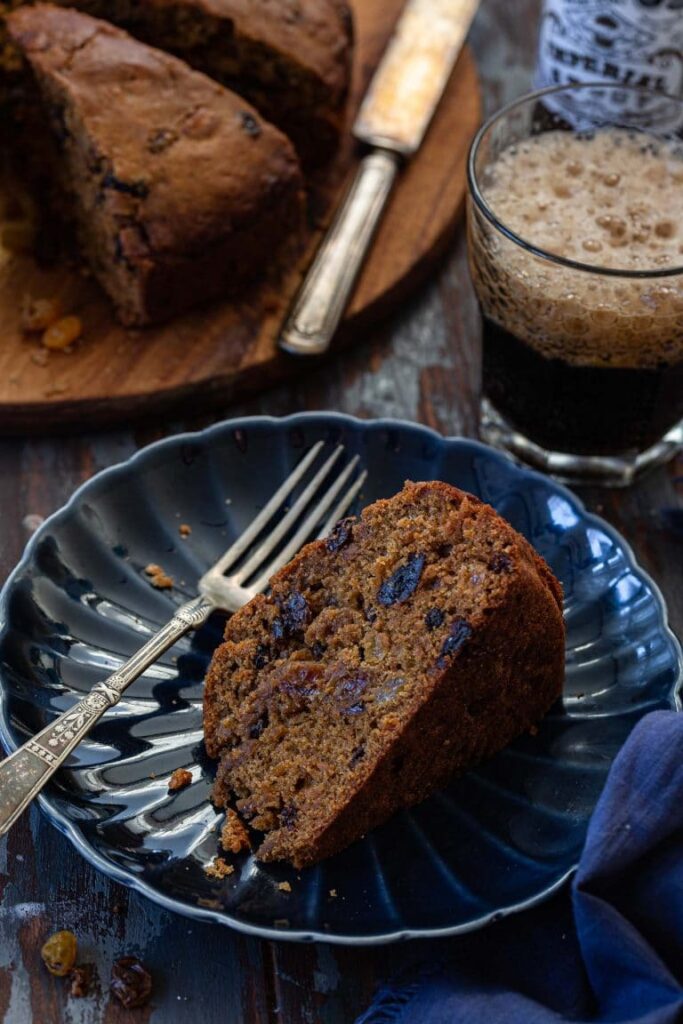
30) Porter Cake
Porter Cake is a beloved Irish dessert known for its rich flavor and dense texture. It gets its name from the dark beer, or porter, used in the recipe. This cake is often enjoyed during festive times like Christmas and St. Patrick’s Day.
To make Porter Cake, you begin by preheating your oven to 350 degrees F. Prepare a 9-inch round cake tin by lining it with parchment paper and greasing it well. This step ensures your cake won’t stick.
In a large bowl, sift together flour, baking powder, baking soda, salt, and spices like cinnamon and mixed spice. These dry ingredients form the base of your cake batter.
Next, heat stout beer like Guinness and pour it over a mixture of dried fruits. This combination should cool down before you add it to the bowl of dry ingredients. This infusion gives the cake its unique flavor.
Add beaten eggs gradually to the mixture, stirring each time until the eggs are fully incorporated. Then fold in any optional ingredients, like cherries or orange zest, for added taste.
Pour the batter into the prepared cake tin. Bake for 2.5 to 3 hours, checking for doneness by using a skewer. The cake should cool completely before cutting, ideally for a week to develop its flavors fully.
History of Traditional Irish Recipes
The history of traditional Irish recipes is rooted in both historical events and cultural practices. This section explores the origins and the role of these recipes in Irish culture.
Historical Background
Ireland’s traditional recipes have a long history that dates back centuries. The potato became a staple in the Irish diet in the 16th century, largely due to its nutritional value and the ease of growing it in Ireland’s soil.
The Great Famine in the 19th century greatly impacted the culinary landscape. When potato blight devastated crops, the Irish adapted by using other available ingredients like grains and dairy.
Irish soda bread emerged during this period, made with simple ingredients such as flour, buttermilk, and baking soda. This was essential when yeast was scarce.
Seasonal vegetables like cabbage and kale have also been staples, often featured in dishes like colcannon, which combines them with mashed potatoes.
Cultural Significance
Traditional Irish recipes are not just food; they are a significant part of Irish heritage. These dishes are often prepared for family gatherings and festive events, especially St. Patrick’s Day.
Colcannon, for example, is traditionally made to celebrate Halloween. Small trinkets are hidden inside, adding a fun, symbolic element to the meal.
Irish stew, typically made with lamb or mutton, onions, potatoes, and carrots, is another culturally important dish. Originally a simple, hearty meal for farmers, it symbolizes comfort and sustenance.
Recipes have been passed down through generations, preserving the history and culture of Ireland. They reflect the resilience and resourcefulness of the Irish people.
Ingredients in Irish Cuisine
Irish cuisine is known for its simplicity and reliance on fresh, local ingredients. Key elements include hearty vegetables, flavorful herbs, and basic cooking staples that contribute to its distinctive taste.
Common Herbs and Spices
Herbs and spices play a crucial role in Irish cooking. Parsley and thyme are often used, giving dishes a fresh, earthy flavor. Bay leaves are common in stews, adding depth to the broth.
Chives frequently top soups and potato dishes, offering a subtle onion-like taste. Mint is sometimes found in Irish lamb recipes, giving the meat a refreshing lift. Black pepper and salt remain essential in almost every recipe, ensuring that each dish is well-seasoned.
Staple Ingredients
Staple ingredients in Irish cuisine are fundamental for many traditional recipes. Potatoes are perhaps the most iconic, used in dishes like colcannon and shepherd’s pie. Cabbage is another essential, forming the backbone of meals such as corned beef and cabbage.
Butter and buttermilk are key in making Irish soda bread, a famous staple. Oats are frequently used in both savory and sweet dishes, from oatcakes to porridge. Onions and leeks are critical for soups and stews, adding flavor and texture.
Barley is another important grain, often found in stews and soups. Carrots and celery are vegetables that provide a base for many hearty dishes. Rich and versatile, these ingredients define much of what makes Irish cuisine beloved.


